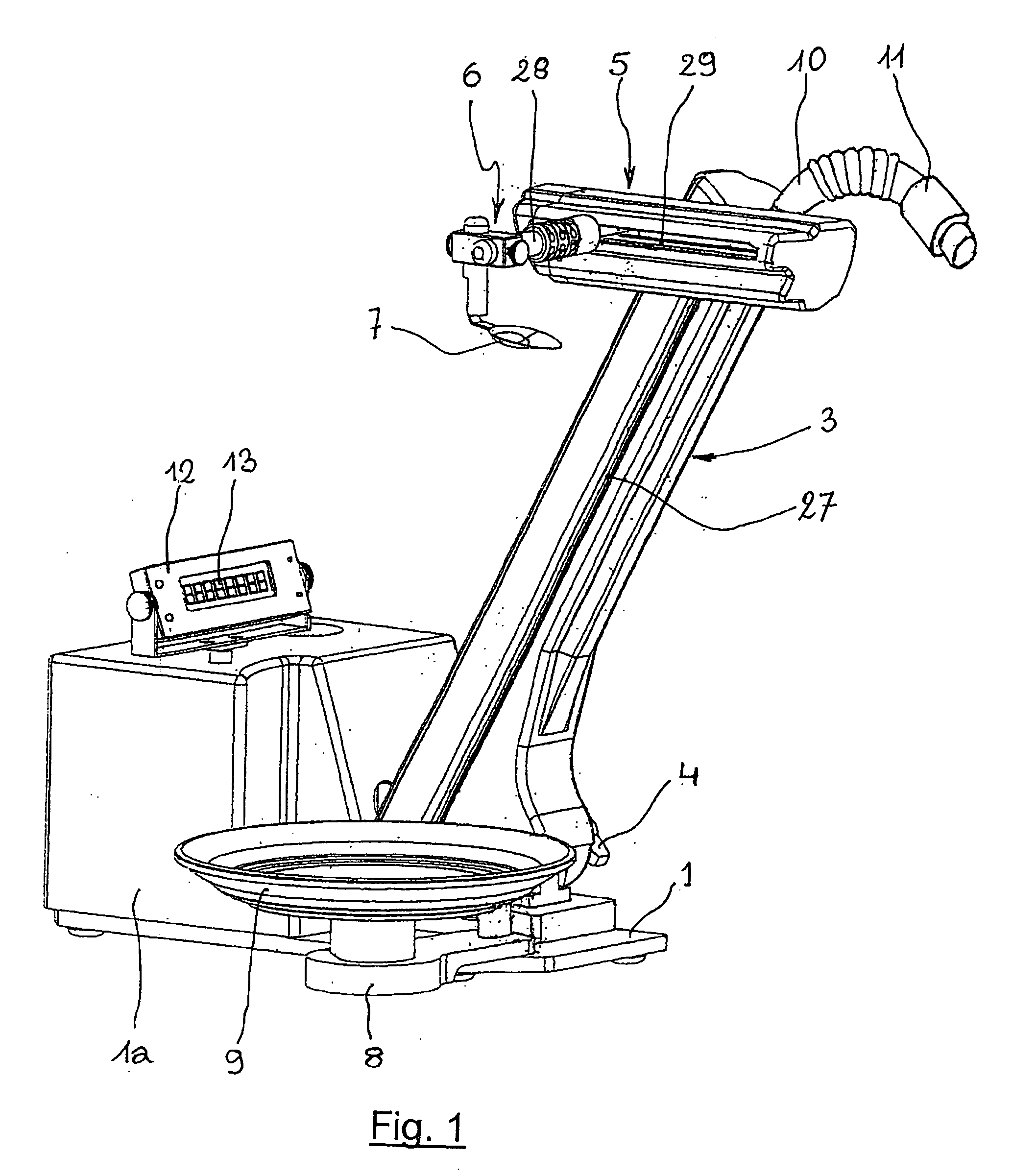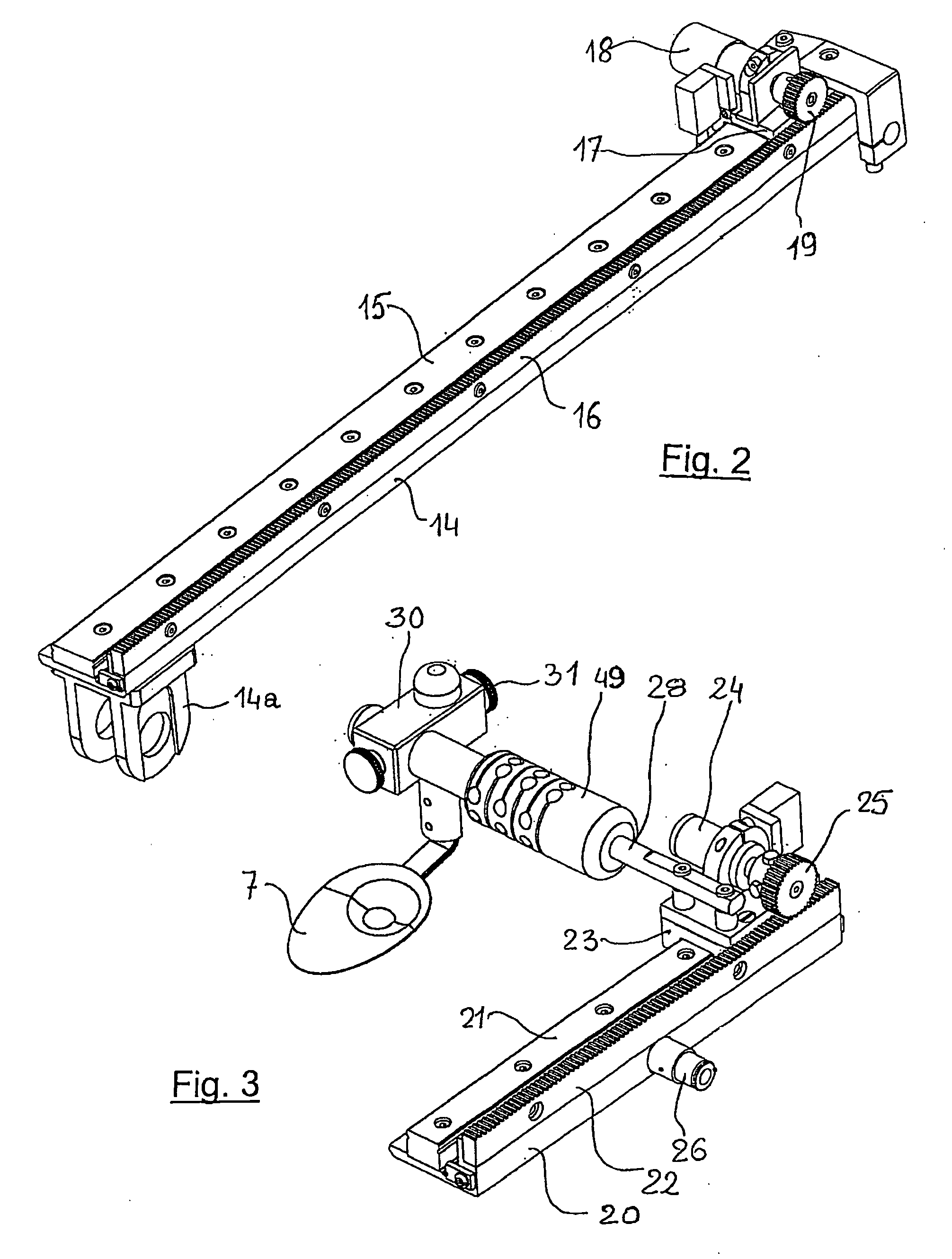Self-feeding apparatus
a self-feeding and apparatus technology, applied in the field of self-feeding apparatuses, can solve the problems of increased mechanical and electrical complexity, increased safety risks of feeding devices for users, and mechanical complexity of automatic feeders
- Summary
- Abstract
- Description
- Claims
- Application Information
AI Technical Summary
Benefits of technology
Problems solved by technology
Method used
Image
Examples
Embodiment Construction
[0031]With reference to FIG. 1, the self-feeding apparatus according to the invention comprises a support base 1 for a box-type frame 1a containing tanks for liquid food and beverages (which will be described later on) as well as the apparatus electronics, and a first arm 3, slanted and connected to the base 1 through a rotoidal joint 4 allowing the inclination of arm 3 to be adjusted between two limit positions, i.e. a substantially vertical position and a substantially horizontal position. A second substantially horizontal arm 5, is mounted on the arm 3 in a longitudinally slidable fashion. On second arm 5 a support, generally indicated at 6, is mounted for a food scooping means, such as cutlery, in particular a spoon 7, said support 6 being also slidable longitudinally on second arm 5. Furthermore a third arm 8 extends horizontally from support base 1 and is equipped with a support 9 for a plate, not shown, or more in general a container for solid food to be fed to the disabled u...
PUM
 Login to View More
Login to View More Abstract
Description
Claims
Application Information
 Login to View More
Login to View More - R&D
- Intellectual Property
- Life Sciences
- Materials
- Tech Scout
- Unparalleled Data Quality
- Higher Quality Content
- 60% Fewer Hallucinations
Browse by: Latest US Patents, China's latest patents, Technical Efficacy Thesaurus, Application Domain, Technology Topic, Popular Technical Reports.
© 2025 PatSnap. All rights reserved.Legal|Privacy policy|Modern Slavery Act Transparency Statement|Sitemap|About US| Contact US: help@patsnap.com



